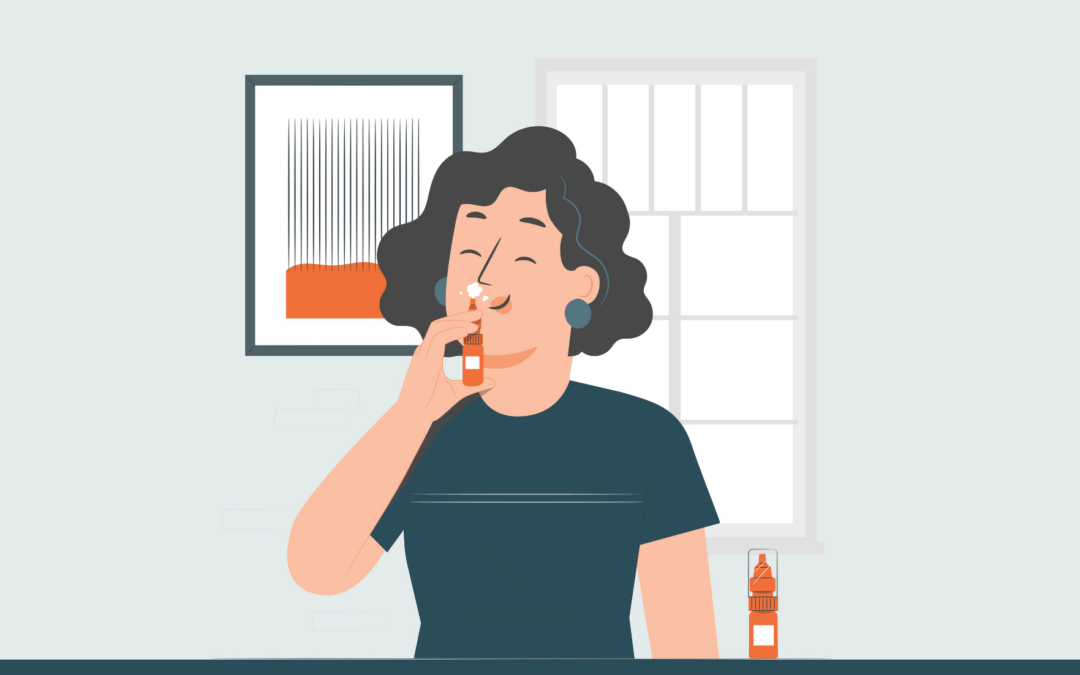More than a convenient alternative to the traditional flu shot
The FDA’s approval of a nasal mist flu vaccine for at-home use represents more than just a convenient alternative to the traditional flu shot — it marks a significant shift in healthcare delivery, moving toward a decentralized model where patients can self-administer care from the comfort of their own homes.
This shift gives people more control over their health but — much like that exercise bike in the corner that turns into a clothes rack — just having access to at-home healthcare doesn’t always mean people will use it. Ensuring uptake and adherence takes more than just making these tools available. Behavioral science plays a crucial role in identifying and addressing the psychological and contextual barriers that keep people from making full use of these services. As healthcare continues to move into the home, we’re bound to encounter new challenges; many of these we don’t fully understand yet. But we can learn a lot from existing barriers people face — including getting vaccinated in clinics or (not) using their home gyms — and harness those insights to make sure these newer, at-home options can realize their full potential.
How to overcome at-home healthcare challenge one: Procrastination
One of the biggest challenges with at-home self administered healthcare, is procrastination. You might receive the vaccination right on your doorstep but — just like that shiny new exercise bike sitting unused — convenience doesn’t guarantee you’ll actually use it. Without the structure of an appointment or a sense of urgency, it’s easy to keep putting it off. Behavioral science shows that we tend to delay tasks that lack immediacy—even when they’re simple.
To combat this inertia, strategies that emphasize commitment can be incredibly effective. When people make a commitment, they are more likely to follow through, whether it’s stating their intention to administer the flu mist or setting a specific date and time. Pairing this commitment with timely reminders — delivered via text or app notifications — can provide that extra nudge needed to act before “later” turns into “never.”
How to overcome at-home healthcare challenge two: Perception of informality
Another challenge is context. Administering the flu mist at home can feel less medical, less formal than a visit to the doctor’s office. Outside of a doctor’s office and without a healthcare provider present, the perception of urgency or importance may be diminished. This lack of “medical context” could make people feel like the task is less necessary. Behavioral science suggests that reframing the experience to emphasize its importance — perhaps through visual cues or messages that remind patients of the health benefits — can help re-create that sense of significance, even at home.
How to overcome at-home healthcare challenge three: Self-administration hesitancy
Lack of familiarity and confidence can also be a barrier. Self-administering something that used to relying on a healthcare provider to do can feel intimidating. Concerns about making a mistake or dealing with side effects on your own can lead to avoidance. Here, simple, clear instructions — whether through video tutorials, visual aids, or step-by-step guides — can help bridge the gap. Offering easy access to support, like a hotline or an online chat, can also provide reassurance and build confidence.
How to overcome at-home healthcare challenge four: Perceived lack of risk
There’s also often a perceived lack of risk or need. Many people think, “I never get the flu, so why bother?” Behavioral science has long highlighted that when risks feel distant or abstract, we’re less likely to take preventive actions. Administering a flu mist at home can make the experience feel even more removed from the urgency of clinical care. To counter this, it helps to remind individuals of the personal relevance and potential risks of not getting vaccinated. Sharing relatable stories about flu prevention or framing it as part of a broader health routine can shift this mindset.
How to overcome at-home healthcare challenge five: Propensity to forget
Lastly, forgetting is a real issue with at-home healthcare. Without the usual reminders from a clinic, it’s easy for the flu mist to slip down a to-do list amidst other responsibilities. This is where timely nudges become essential — reminders sent during flu season or after a healthcare visit can serve as crucial prompts to ensure the vaccine doesn’t go unused.
The future of at-home healthcare depends on transforming access into action
While the nasal flu mist is an illustrative example, the principles of behavioral science can be applied to a variety of other at-home healthcare interventions. The shift to at-home care extends beyond flu prevention to other areas such as screenings for colorectal cancers, COVID-19, HPV and HIV, as well as more complex treatments like dialysis or cancer infusions. Each of these interventions presents unique behavioral challenges that require tailored strategies to support people to initiate and maintain self-administered care at home.
While the convenience of at-home self-administered vaccinations is undeniable, we must not let this ease blind us to the essential behaviors that drive their success. The potential of at-home healthcare to improve public health outcomes is substantial, but achieving this potential relies on our ability to transform access into action. With behavioral science guiding our strategies, we can create a healthcare landscape that is not only accessible but also truly impactful.
